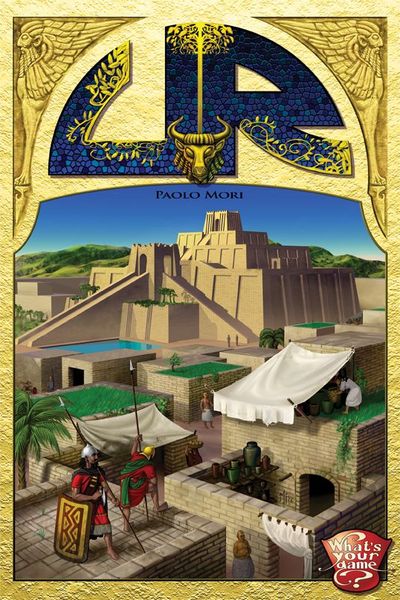Ur is an ancient board game that dates back to around 2500 BC in Mesopotamia. It is considered one of the oldest known board games in history and has been found in archaeological excavations. The game has been recreated and brought to modern audiences by designer Mariano Iannelli in 2006.
Game Components of Ur
Game Board: Composed of two rectangular sets of boxes, one with three rows of four boxes and the other with three rows of two boxes, joined by a “narrow bridge” of two boxes[5|.Game Pieces: Two sets of seven pieces each, one set white with five black dots and the other set black with five white dots.Dice: Four-sided, tetrahedron-shaped dice with two marked and two unmarked corners.Rosettes: Colored rosettes in the middle of the center row, indicating safe squares and providing extra rolls when landed on.
How To Setup Ur
To set up the game, each player places their seven pieces on the starting squares of their side of the board. The dice are ready for use, and the game is set to begin with the first roll.
Gameplay Mechanics and Game Objective
Rolling Dice: Determine the number of spaces to move using the tetrahedron-shaped dice.Moving Pieces: Players can move any of their pieces on the board or add a new piece if they have not all entered the game[2}.Capturing Pieces: Pieces on the eight middle squares can be captured by an opponent’s piece landing on the same space, sending the captured piece back to the start.Safe Squares: Pieces on the player’s own squares and on the rosette squares are safe from capture.Objective: Move all seven pieces around the board and remove them before the opponent does.
Player Experience
The Royal Game of Ur combines elements of luck and strategy, making it engaging for players who enjoy games like backgammon. The game can last up to half an hour, and the outcome is influenced by both the roll of the dice and the player’s strategic decisions. The game also had a divinatory aspect, where landing on certain squares was believed to predict future events or signify spiritual messages.
Pros
Historical Significance: One of the oldest known board games, providing a glimpse into ancient gaming culture.Balance of Luck and Strategy: Offers an interesting mix of chance and strategic choices.Simple yet Engaging: Easy to learn but challenging to master.Divinatory Element: Adds a unique layer of interpretation and intrigue.
Cons
Luck-Dependent: The outcome can be heavily influenced by the roll of the dice.Limited Combat Interaction: Some versions have fewer “safe” squares, but the basic version is less combative compared to modern board games.Niche Appeal: May appeal more to those interested in historical games rather than modern gamers.
Personal Thoughts on Ur
The Royal Game of Ur is perfect for history enthusiasts, those who enjoy games with a rich cultural background, and players who appreciate the simplicity and strategic depth of ancient board games. It offers a unique gaming experience that blends luck, strategy, and a touch of historical mystique. While it may not appeal to everyone, especially those seeking highly interactive or complex games, it remains a fascinating piece of gaming history worth exploring.
We are supported by our audience. When you purchase through links on our site, we may earn an affiliate commission, at no extra cost for you. Learn more.

